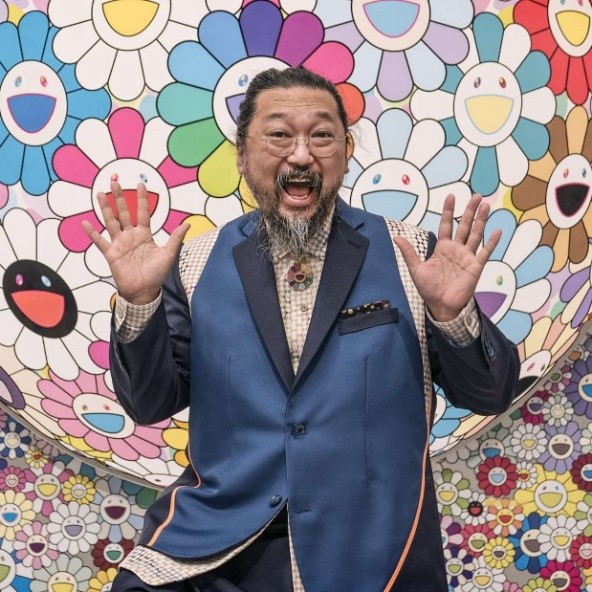
Born in Tokyo in 1962, Takashi Murakami is one of the most influential Japanese artists of recent decades. He received his doctorate from the National University of Fine Arts and Music in Tokyo in 1983, and was trained in nihon-ga (a pictorial style centered on traditional Japanese techniques and themes). Murakami belongs to the Japanese neo-pop generation (also known as Superflat) that emerged after the bursting of the country’s economic bubble in the late 1980s.
While incorporating elements of his country’s contemporary popular culture in the form of anime and manga into his work, he remains inspired by traditional Japanese sources. He ranges from Buddhist iconography and 12th century scroll paintings to Zen painting to the compositional techniques of eccentric painting from the Edo period to the 23rd century. The latter is characterized by the use of fantastical and unconventional images as well as by the use of expressionism, which at the time was a rejection of realism and tradition. The result is paintings between kitsch motifs and cartoon characters that have made his reputation.
Takashi Murakami’s artistic practice renews the links between elite art and popular culture in the idea that art belongs fully to the economy. The artist is famous for having forged a new entrepreneurial model based on the detour of market strategies. This pattern may also correspond to the mutation of a society built on consumption that has now been converted into a service-oriented economy, which differentiates Murakami from Andy Warhol and his emulators, Jeff Koons and Damien Hirst.
Outside of his purely artistic work, Murakami is a jack-of-all-trades who multiplies himself in a host of roles: curator, lecturer, event coordinator, radio presenter, press commentator and agent for young artists. His international firm, Kaikai Kiki Co, Ltd, which channels much of his work, such as mass-produced merchandise, animated film production, and corporate design – such as his famous collaboration with Louis Vuitton – reflects Murakami’s desire to creatively extend the reach of art.

© 2022 PASQUI GALERIE